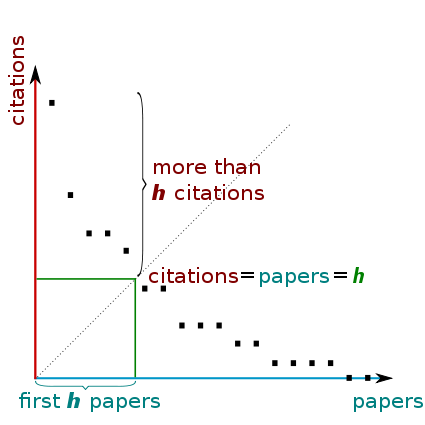Track Your Scholarly Impact Metrics
We often have to develop a narrative of the impact of our scholarly and creative work for a dossier for tenure or promotion, grant proposals, or for an academic program review. Citation analysis and other bibliometric methods help justify our scholarly impact narrative by providing evidence of quantitative and qualitative metrics of the impact.
Understanding Scholarly Impact
Based on Research Impact Framework (Qin, 2010) and Diffusion of Innovation Theory (Rogers, 2003), research impact can be determined by three factors. The factors indicating knowledge diffusion consist of the following:
|
Knowledge Diffusion |
Impact |
Metrics |
|---|---|---|
|
Extent |
Intellectual Impact |
Traditional bibliometric (e.g., # of citations, h-index) |
|
Adoption |
Technology Impact |
License agreements, patents, academic-industrial research partnership |
|
Benefits |
Societal Impact |
Alternative metrics (# of views, downloads, bookmarks, tweets, mentions), changes to practice, services, and policies |
Sources and Resources
- Qin, J. (2010). Empirically assessing impact of scholarly research.
- Rogers, E. M. (2003). Diffusion of Innovations. New York: Free Press. 5th Ed.
- Herbert, B.E. (2016). Best practices for the use of scholarly impact metrics.
Measuring your Scholarly Impact
Intellectual Impact
- Citation metrics: is how often an article was cited in other articles, books, or other sources. Citation rates are heavily dependent on the discipline and the number of people working in that area.
- H-index: The definition of the index is that a scholar with an index of h has published h papers, each of which has been cited in other papers at least h Thus, the h-index reflects both the number of publications and the number of citations per publication.

Technology Impact
- License agreements
- Patents
- Academic-industrial research partnership
Societal Impact
- Altmetrics: Alt-metrics (aka, alternative metrics) are metrics and qualitative data that are complementary to traditional, citation-based metrics, such as impact factor and h-index. They can include (but are not limited to) peer reviews on Faculty of 1000, citations on Wikipedia and in public policy documents, discussions on research blogs, mainstream media coverage, bookmarks on reference managers like Mendeley, and mentions on social networks such as Twitter.
Altmetric Explorer for TAMU
- Texas A&M University Libraries has partnered with Digital Science to develop TAMU's Altmetric Explorer which aggregates alternative metrics about A&M faculty research. Log in to the Explorer and know your impact!
- Altmetric Explorer access enable you to:
- Browse and filter on the attention surrounding research from your institution
- View results at the author and departmental level
- Explore the full Altmetric database of over 7 million research outputs with online attention
- Upload DOIs and other identifiers to create custom searches and comparisons
- Create an account to save your searches
- More info about Altmetric Explorer:
